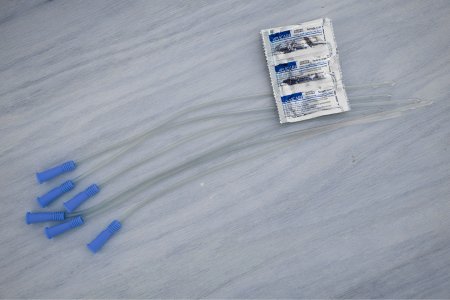What Causes Urinary Incontinence?

Urinary incontinence, or involuntary bladder leakage, affects millions of people and can impact daily life, self-confidence, and overall well-being. While incontinence isn’t a disease itself, it’s often a symptom of an underlying condition. Understanding the causes and available treatment options can help you regain control and improve your quality of life.
What Is Urinary Incontinence?
Urinary incontinence is the loss of bladder control, leading to accidental urine leakage. It can range from occasional minor leaks to a complete inability to hold urine.
What Causes Urinary Incontinence?
Urinary incontinence can result from temporary triggers or long-term medical conditions.
- Bladder Irritants – Caffeine, alcohol, carbonated drinks, spicy foods, and artificial sweeteners can overstimulate the bladder.
- Urinary Tract Infections (UTIs) – UTIs can cause temporary urgency and leakage.
- Medications – Some diuretics, sedatives, and muscle relaxants can increase bladder activity.
- Constipation – Straining from constipation puts pressure on the bladder and weakens pelvic muscles.
- Weak Pelvic Floor Muscles – Common after pregnancy, childbirth, or menopause.
- Enlarged Prostate or Prostate Surgery – Can lead to overflow incontinence in men.
- Neurological Disorders – Conditions like Parkinson’s disease, multiple sclerosis (MS), stroke, or spinal cord injuries can disrupt bladder signals.
- Obesity – Excess weight increases pressure on the bladder.
- Aging – Bladder muscles weaken over time, leading to more frequent urges.
What Are the Types of Urinary Incontinence
There are several types of urinary incontinence, each with unique symptoms and causes:
- Stress Incontinence – Leaks occur during coughing, laughing, sneezing, or exercise due to weakened pelvic muscles.
- Urge Incontinence (Overactive Bladder) – Sudden, intense urges to urinate, often linked to neurological conditions or bladder irritation.
- Overflow Incontinence – The bladder doesn’t empty fully, leading to frequent dribbling, often due to prostate problems in men.
- Mixed Incontinence – A combination of stress and urge incontinence.
- Functional Incontinence – A physical or mental condition (like arthritis, dementia, or mobility issues) prevents a person from reaching the restroom in time.
How is Urinary Incontinence Diagnosed?
If you’re experiencing bladder leakage, a doctor may perform:
- A physical exam & medical history to identify underlying causes.
- Urinalysis to rule out infections or abnormalities.
- Bladder function tests (urodynamics) to measure bladder control and capacity.
- Imaging tests (ultrasound, cystoscopy) to examine the bladder and urinary tract.
Treatment Options for Urinary Incontinence
The right treatment depends on the type and severity of incontinence, as well as underlying health conditions.
Lifestyle & Behavioral Changes
- Bladder Training – Gradually increasing the time between bathroom visits can help improve control.
- Dietary Adjustments – Avoiding caffeine, alcohol, and acidic drinks may reduce irritation.
- Weight Loss – Reducing excess weight can decrease pressure on the bladder.
Pelvic Floor Therapy & Exercises
- Kegel Exercises – Strengthening the pelvic floor muscles can help with stress incontinence.
- Biofeedback Therapy – Helps improve muscle awareness and control.
Medical Treatments
- Medications – Certain drugs can help relax the bladder (for overactive bladder) or tighten the sphincter (for stress incontinence).
- Botox Injections – Can help people with severe urge incontinence by relaxing the bladder muscle.
- Nerve Stimulation Therapy – Uses electrical pulses to regulate bladder control.
Medical Devices & Surgical Options
- Urethral Inserts & Pessaries – Support devices that help control leakage (mostly for women).
- Surgery – For severe cases, procedures like sling surgery or artificial urinary sphincters may be options.
When is a Catheter Needed for Urinary Incontinence?
For individuals with urinary retention or severe incontinence, catheters may be necessary to fully empty the bladder.
- Intermittent Catheters – Inserted as needed to drain urine
- Indwelling Catheters (Foley Catheters) – Left in place for continuous drainage, usually for long-term medical conditions
- External Catheters – A non-invasive option that fits around the urethra, commonly used for male incontinence
If you need to use a catheter, it's essential to choose the right type and follow proper hygiene practices to reduce the risk of urinary tract infections (UTIs) and complications.
When Should You See a Doctor for Urinary Incontinence?
If urinary incontinence affects your life, speak with a healthcare provider. Seeking medical help can prevent complications and improve quality of life. If incontinence is sudden, severe, or accompanied by pain, it may signal a more serious issue that requires urgent attention.
Need Help Finding the Right Solution for Urinary Incontinence?
We offer a variety of catheter supplies to help you regain comfort and confidence. Our team is ready to assist you in selecting the best options for your needs.
📞 Call us today at 888‑726‑5066 or fill out the form below to request free samples!
Request Free Catheter Samples
Related Articles





